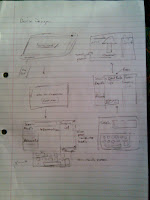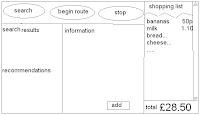
In the UK there are 4 main supermarket stores, Tescos, Asda, Sainsburys and Morrisons. All 4 have a similar layout consisting of isles, deli counters and checkouts. Isles are designed to grant shoppers enough space to ensure a smooth shopping experience, but at busy times isles can become congested with shoppers and out of control trolleys.
Major Singh’s – A typical Shopping Scenario
Major Singh walks into the supermarket, his back arched slightly forward and walking with a limp, his knees momentarily buckling under the weight of his giant torso….. the ex army veterans body has taken its toll, especially after his well publicised ‘torturing’ incident that occurred in the late 70s by militant group lead by the notorious Jack Baber from Major Singh’s time in the Indian army. Being an old fashioned independent person, Major does his own weekly shopping without fail.
It’s a Sunday, and Major Singh is doing his weekly shop, the supermarket it busy, the hustle and bustle of the supermarket reminds Major Singh of Jalandur, his home town back in India, a woman shoots past in a traditional metal trolley, Major Singh can hear those ominous beeps from the checkout…. he looks round, and sees the checkouts full to the brim with people purchasing their goods…. Major Singh mutters to himself “hai hai, pend di yaaar”, he wipes his face, winds up his moustache and goes and gets his new computerised shopping trolley.
Major Singh then prepares to add his shopping list to the trolley device via the user friendly simplistically intuitive computerised touch screen pad on the trolley. Major Singh is standing stationary in the middle of the entrance entering his shopping list, as people brush past him to get into the store…. if only there was a small area where he could spend 5 minutes declaring his shopping list. Major Singh swipes the trolley device with his personal shopping card which stores all of his medical conditions, dietary requirements and shopping patterns.
Major Singh adds the essentials into his shopping list; he uses the interface to add bread, milk, meat and whiskey. The device then computes a complex algorithm and provides major Singh with the most efficient route round the supermarket to collect his desired products. This saves Major Singh a lot of time, hassle and reduces the stress on his body instead of walking back and forth down isles.
As Major Singh goes, as Dale would say, “wild in the isles”, following the route provided to him by the trolley, he picks up his bottle of whiskey and places it into his trolley. The computerised device starts to flash and shows a warning message to Major Singh, it explains that the high levels of sugar content in the Whiskey is not suitable for Major Singh as he suffers from Type 2 diabetes. Major Singh subsequently removes the bottle out of the trolley and replaces it back onto the shelf; the product is automatically taken off the products list on the device.
















